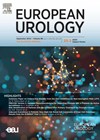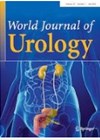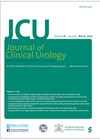
Journal Reviews
Multiparametric MRI with targeted-only biopsy – a new standard?
In this issue of European Urology, Kasivisvanathan et al. present a meta-analysis of two randomised trials comparing prebiopsy MRI with targeted biopsy (TBx) alone versus standard transrectal ultrasound-guided biopsy (TRUS-Bx) in biopsy-naïve men at risk of prostate cancer. Their findings...
The cost of bladder cancer: what can be done?
The rising cost of cancer care is a growing concern for health systems. A 2020 study estimated Europe’s annual cancer-related expenditure at €199 billion, with €109 billion attributed to healthcare costs. Bladder cancer (BC), in particular, imposes a significant financial...
Preoperative stenting compared to non‑stenting in ureteroscopy for urinary stone disease
Urolithiasis, one of the most prevalent urological conditions worldwide, significantly affects patients’ quality of life. In the United States, its lifetime prevalence is approximately 1 in 11, while global rates vary from 1% to 13%. The management of urolithiasis offers...
ESWL, fURS and PCNL for lower pole renal stones
Lower pole stones (LPSs) are common but less likely to pass spontaneously than other renal stones, often necessitating intervention. In 2015, a systematic review and meta-analysis comparing percutaneous nephrolithotomy (PCNL), flexible ureterorenoscopy (fURS), and extracorporeal shockwave lithotripsy (ESWL) was published....
Percutaneous nephrolithotomy: wisdom, dogma, paradigm and myths
A non-transpapillary technique appears to ease access to the kidney – the most critical step in percutaneous nephrolithotomy (PNL) – when compared to the classic transpapillary approach. Remarkably, the earliest descriptions of percutaneous access by Goodwin et al. in 1955...
Management dilemma for very high-risk non–muscle-invasive bladder cancer
The European Association of Urology (EAU) guidelines recommend upfront radical cystectomy (RC) for very high-risk (VHR) non-muscle-invasive bladder cancer (NMIBC). However, real-world adoption is limited, as most patients are reluctant to undergo immediate bladder removal. The EAU 2021 risk model...
Is antibiotic prophylaxis warranted in hypospadias repairs?
Hypospadias repair is a common paediatric urological procedure. Complication rates following hypospadias repair are variable (ranging from 5–10% for distal hypospadias repairs and as high as 32–70% for proximal repairs). Limiting surgical site infections by minimising infection through antibiotic prophylaxis...
Does coiling of the proximal end of the ureteral stent affect stent-related symptoms?
Ureteral stents, first described by Zimskind in 1967, have become a critical tool in modern urology. They are widely used in various endourological procedures to drain obstructed or infected renal units and as a safety measure before or after surgeries....
Disconnect between clinical trials and real-world oncology patients
Clinical trials are essential to advancing cancer treatment, providing the evidence needed to approve new therapies and improve patient outcomes. However, the strict eligibility criteria used – especially in prostate cancer trials – often exclude real-world patients. These criteria prioritise...
Preoperative risk stratification of high-risk prostate cancer patients
High-risk prostate cancer (HRPCa) is associated with a significant risk of recurrence after radical treatment. While several classification systems exist, the D’Amico criteria – based on clinical T stage ≥T2c, prostate specific antigen (PSA) ≥20 ng/mL, or Gleason score (GS)...
Malignant upper urinary tract obstruction: emergency presentations and long-term outcomes
Malignant upper urinary tract obstruction (MUUTO) is a frequent emergency urological referral, often necessitating kidney drainage to preserve renal function. However, many patients have advanced cancer with limited life expectancy, raising questions about intervention benefits. While percutaneous nephrostomy (PCN) or...
Association of prostate size with capsule thickness and glandular epithelial cell density
Benign prostatic hyperplasia (BPH) and prostate cancer (PCa) are two significant urologic diseases affecting ageing men. BPH is histologically evident in over half of men above 50, while PCa is a highly lethal cancer prevalent in men in the United...











